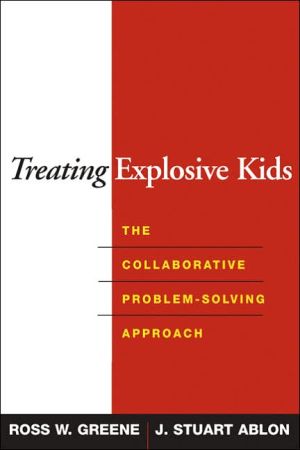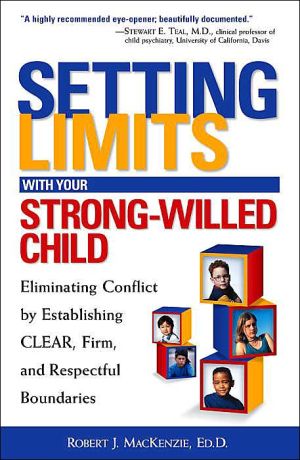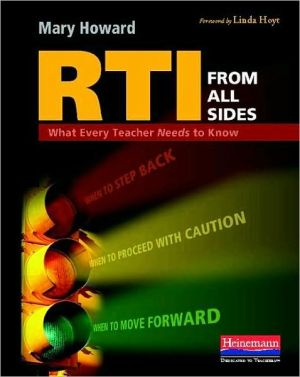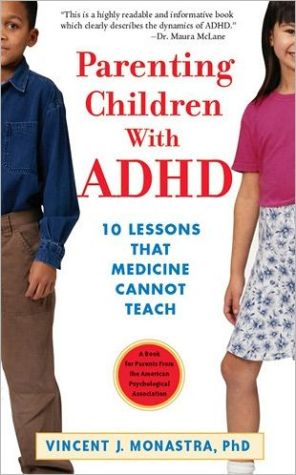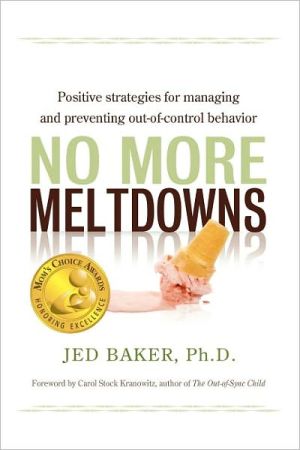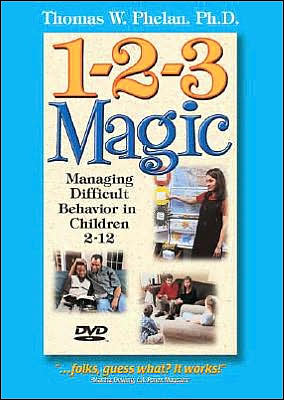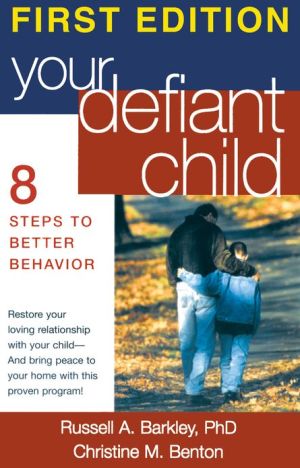Treating Explosive Kids: The Collaborative Problem-Solving Approach
The first comprehensive presentation for clinicians of the groundbreaking approach popularized in Ross Greene's acclaimed parenting guide, The Explosive Child, this book provides a detailed framework for effective, individualized intervention with highly oppositional children and their families. Many vivid examples and Q&A sections show how to identify the specific cognitive factors that contribute to explosive and noncompliant behavior, remediate these factors, and teach children and...
Search in google:
The first comprehensive presentation for clinicians of the groundbreaking approach popularized in Ross Greene's acclaimed parenting guide, The Explosive Child, this book provides a detailed framework for effective, individualized intervention with highly oppositional children and their families. Many vivid examples and Q&A sections show how to identify the specific cognitive factors that contribute to explosive and noncompliant behavior, remediate these factors, and teach children and their adult caregivers how to solve problems collaboratively. The book also describes challenges that may arise in implementing the model and provides clear and practical solutions. Two special chapters focus on intervention in schools and in therapeutic/restrictive facilities. Doody Review Services Reviewer:Susan Richardson, MA, PsyD(Private Practice)Description:This is a casebook for therapists working with children and families. The authors present a family-centered approach to working with children and adolescents who are prone to explosive outbursts.Purpose:The authors state that the premise of their book is that children and adolescents with explosive episodes are lacking cognitive skills in the domains of frustration tolerance, problem solving and/or adaptability. Parents who are able to view the difficulties in this paradigm, rather than viewing the behavior as willful and intentional, are better able to communicate with their children and help build these skills, minimizing these outbursts.Audience:This book is written for clinicians who work with children and adolescents and their families. The authors provide many detailed and informative examples for the clinician, ably demonstrating their experience and mastery of the area.Features:The book describes the collaborative problem-solving approach to dealing with children and adolescents with explosive outbursts. The authors define the cognitive deficits that lead up to these affective explosions then teach the clinician to help parents and the kids identify likely triggers. The problem-solving approach involves mutual empathy, respect, and joint concerns, intentionally avoiding solutions that only focus on the adult or the child's concerns.Assessment:This is sure to be of great use to any clinician looking for tools in working with children and families. The authors are very specific and clear in helping clinicians teach improved communication and a more useful paradigm for viewing problematic behavior.
1. Explosive Children and Adolescents: The Need for a Different Paradigm2. Identifying Pathways and Triggers3. Options for Handling Problems: Three Plans4. Plan B Basics5. Beyond the Basics6. Skills Trained with Plan B7. Collaborative Problem Solving in Schools8. Collaborative Problem Solving in Therapeutic/Restrictive Settings9. Last Call10. Epilogue: Beyond Explosive Kids
\ From The CriticsReviewer: Susan Richardson, MA, PsyD(Private Practice)\ Description: This is a casebook for therapists working with children and families. The authors present a family-centered approach to working with children and adolescents who are prone to explosive outbursts.\ Purpose: The authors state that the premise of their book is that children and adolescents with explosive episodes are lacking cognitive skills in the domains of frustration tolerance, problem solving and/or adaptability. Parents who are able to view the difficulties in this paradigm, rather than viewing the behavior as willful and intentional, are better able to communicate with their children and help build these skills, minimizing these outbursts.\ Audience: This book is written for clinicians who work with children and adolescents and their families. The authors provide many detailed and informative examples for the clinician, ably demonstrating their experience and mastery of the area.\ Features: The book describes the collaborative problem-solving approach to dealing with children and adolescents with explosive outbursts. The authors define the cognitive deficits that lead up to these affective explosions then teach the clinician to help parents and the kids identify likely triggers. The problem-solving approach involves mutual empathy, respect, and joint concerns, intentionally avoiding solutions that only focus on the adult or the child's concerns.\ Assessment: This is sure to be of great use to any clinician looking for tools in working with children and families. The authors are very specific and clear in helping clinicians teach improved communication and a more useful paradigm for viewing problematic behavior.\ \ \ \ \ From the Publisher“Greene and Ablon have done it again. This book illustrates their clinical acumen, conceptual sophistication, and scientific rigor--all at the same time! This is an uncommonly useful book for students and for therapists at all levels of experience. The authors' collaborative problem-solving approach takes into consideration the delicate dance between poorly regulated children and their frustrated and sometimes poorly equipped parents. These children and their families require special interventions, and this innovative book goes a long way to helping us in our clinical practice, teaching, and research.”--Thomas H. Ollendick, PhD, Child Study Center and Department of Psychology, Virginia Tech\ "Provocative, conceptually grounded, and clinically wise. The CPS approach looks at a range of common, vexing parent-child problems and applies sound individual and family strategies, innovatively framed in the context of children's deficits in executive functions, communication, and emotion regulation. Loaded with case examples, this is essential reading for all those who work with 'externalizing' children."--Stephen P. Hinshaw, PhD, Department of Psychology, University of California, Berkeley\ "This cutting-edge book provides a practical and easily understood guide for treating explosive children and adolescents. It presents an innovative, compassionate model that is very helpful in improving the quality of life for these kids and those who care for them." --Michael S. Jellinek, MD, Child Psychiatry Service, Massachusetts General Hospital; Departments of Psychiatry and Pediatrics, Harvard Medical School\ "Greene and Ablon's CPS approach is an excellent integration of theory, research, and clinical wisdom. The authors present a thoughtful clinical framework and specific procedures for interpreting and managing children's explosive, noncompliant behavior. This book belongs on the bookshelf of every clinician who works with these youngsters."--Howard Abikoff, PhD, Institute for Attention Deficit-Hyperactivity and Behavior Disorders, NYU Child Study Center\ \ \ \ \ Cognitive Behavioral Therapy Book Reviews"Ross Greene and J. Stuart Ablon...have elegantly translated neuropsychologists' perspective of how children organize their experiences, regulate their emotions and behaviors, and integrated it with systemic family therapy, empathy development, and communications analysis to present a refreshing treatment approach to disruptive behaviors in children and teens....Details a new systemic approach for children with behavioral issues, as well as articulates a significant challenge to interventions derived from learning theory (e.g. time-outs, token economies), which the authors feel are not sufficient explosive behaviors are the result of neurologically based skills deficits that should be remediated by parents in collaboration with their children, not by parents imposing their will on their children....Useful for clinicians at any stage in their training and level of expertise as a comprehensive introduction to a new treatment approach for a very challenging set of familiar clinical issues."--Cognitive Behavioral Therapy Book Reviews\ \ \ \ \ PsycCRITIQUES"One of the greatest benefits of the book is its case examples. There are several 'scripts' in which its approach is illustrated in different situations—schools, family therapy, and treatment facilities. These examples provide the reader with excellent demonstrations of the model....The book is well written and easy to read for both professionals and parents. The book's points are emphasized and reemphasized so that there is little possibility for confusion. Treating Explosive Kids can most certainly be a useful resource for psychologists in schools, private practice, and residential facilities and for parents and teachers."--PsycCRITIQUES\ \
